
10 minute read
Events
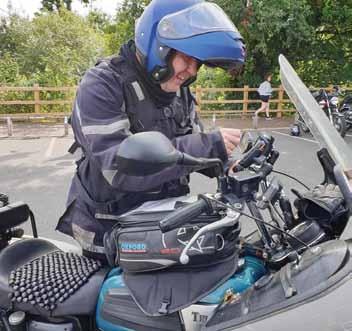
National Road Rally is On 3rd/4th July 2021 (fingers crossed)
Advertisement
• Ride solo or with a group • 100 controls across the UK • Open to any full-licence rider • Full details at nationalroadrally.co.uk
As we went to press, the 2021 National Road Rally looked good to go. With uncertainty continuing over Covid restrictions, it will be a non-contact event with unattended controls and online entries and results system.
If you haven’t registered yet – and you’re quick off the mark – there is still just time to sign up. Go to www.nationalroadrally. co.uk. But be quick – entries close midnight on 1st July. It costs £30 per rider and £10 pillion, no extra charge for team entries.
If you’ve not ridden the National Road Rally before, try it. The list of controls is issued only 10 days before the start, leading to an online buzz of riders discussing routes. There’s an engaged community on Facebook and help is at always on hand for newbies… advice, road work news and of course banter..
For 2021 we have designed a fantastic snood available in two colourways charcoal and white logo https://py.pl/2KgKZM or pale grey and multi coloured logo https://py.pl/8Lx4vweqarD. Both available via NRR website and Facebook page.
A further range of event merchandise is available on the BMF website https://www.totalclothingshop.co.uk/bmf www.nationalroadrally.co.uk
OTHER EVENTS
Some events have a BMF stand* – come and say hello!
Sent 2 Coventry 2021 16th-18th July
https://www.facebook.com/events/570575543614052
Tortoise & Hare Run 18th July (pre-book)
www.wellsclassicmotorcycleclub.weebly.com
AONSC Little Rally 24th-25th July
https://www.facebook.com/events/485487765906635
ACE Cafe Ladies Day 15th August
website: https://london.acecafe.com/event/ladies-day-9am/
Adventure Travel Film Festival 13th-15th August
https://www.adventuretravelfilmfestival.com/
*BMF Dambuster Rally 20th-22nd August
https://www.facebook.com/events/256020332171916
*Women in Motorcycling exhibition 21st August
https://www.facebook.com/events/286609978497919
Overland Event 2nd-5th September
https://www.overlandevent.com
38th Loch Ness Rally 5th September
https://www.facebook.com/events/863111674234837
*Manchester Show 11th-12th September
https://www.manchesterbikeshow.com
Copdock Bike Show 19th September
https://www.facebook.com/events/1117120838685332
*Staffordshire Biker Breakfasts (various dates)
https://www.facebook.com/StaffordshireBikersBreakfast
Goldwing Light Parades (various dates)
https://gwocgb.co.uk/
NB: Please check with organisers before setting out for an event.
Yamaha Nmax is an affordable scooter with ABs
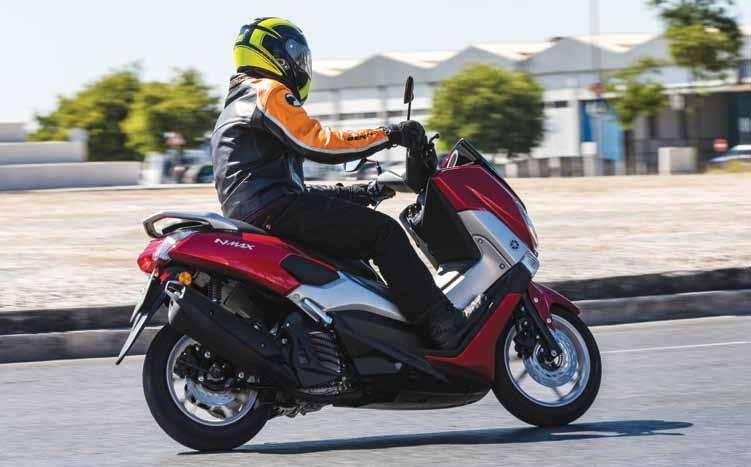
ABS FOR ALL
Have scooter riders in south east Asia been short changed on safety?
JOHN CHATTERTON-ROSS
You might not have heard of the FIM’s Road Safety Award. Established in 2010, and judged by independent experts, the first one went to the AIP Foundation in Vietnam for their work in providing motorcycle helmets for child passengers and affordable helmets for adults. Eight years later it went to the Safer Roads Foundation (SRF), a UK-based charity which I already knew spent vast sums of money fixing dangerous roads all over the world.
SRF was recognised with the 2018 FIM award thanks to its successful campaign to get the law changed in India to make AHO (Automatic Headlights On) compulsory for all new motorcycles.
You might think that this is no big deal, but you would be wrong. The idea of daytime lighting on motorcycles started in the 1970s in the USA. Thanks to the famous Hurt report it had become clear that perception errors by car drivers can lead to motorcycle casualties – daytime headlights help.
The ACEM (Europe’s motorcycle industry association, which actually includes the Japanese big four) made AHO a voluntary commitment. Later the EU codified this into law, forcing the Chinese industry (not part of ACEM) to follow suit. Inexplicably, the International Motorcycle Manufacturers Association (IMMA), which includes ACEM members, decided not to bother with AHO for the rest of the world.
This is where the SRF’s campaign came in, using evidence from ACEM to persuade the Indian authorities to force the domestic industry to make the change. AHO actually cuts manufacturing costs as it eliminates the on/off switch and a simple modification to the wiring loom ensures that the headlight bulb is not stressed every time the engine is started.
Why ABS Works
I met Michael Woodford, Executive Chairman of the SRF, a few years ago, and he explained how the charity spends money on safety related road improvements across the world. He gave an example from Phuket in Thailand, where one downhill bend had combined with a road surface in poor condition and inadequate signage to produce an accident black spot. The problem was the wall at the foot of the hill – riders would often end up hitting it,
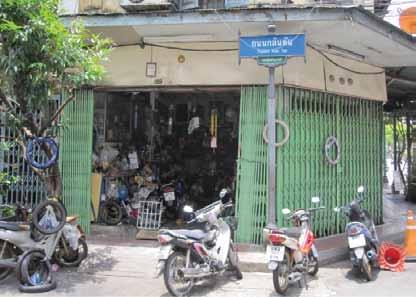
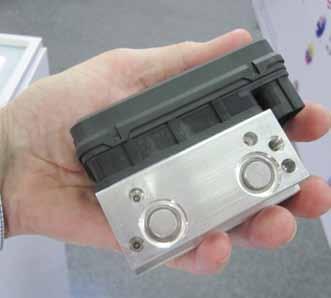
Above:
scooters are ubiquitous in se Asia Left: Mass production has cut the cost of ABs units – this is the Bosch single channel
often with fatal results. I saw some of the post-crash photos, and they were grim.
The work instigated by the SRF was relatively straightforward. The road leading down to the bend was completely resurfaced, making it far less likely that a rider would lose control. Signage was improved and the wall protected.
This example underlined the high casualty rate amongst twowheelers in South East Asia. One issue is the region’s climate. Heavy rain can arrive twice a day, or can last all day, washing away inadequate road surfaces, and these middle-income countries struggle to meet the cost of road maintenance.
Anti-lock brakes on small motorcycles and scooters, which predominate in the region, would go a long way towards improving safety, and in my last two years working at FIM my colleagues on the Public Affairs Commission developed a policy of advocating the fitting of ABS to at least the front wheel of every powered two-wheeler capable of more than 31mph (ie, anything above a moped). In SE Asia many powered two-wheelers are of 70cc, 90cc, 110cc, 125cc (not so many of these), 150cc (very popular) and 160cc, all of which can reach speeds of well over 31mph. Honda’s Asian-built 110cc scooter has CBS only, not ABS, but can reach 62mph.
Interestingly the Euro 4 regulations do allow for front wheel only fitment of ABS, and Honda has gone this route on the new retro look 125cc Cub and a budget 125cc scooter. For a small machine this set up works well.
A graphic demonstration of just how well it works was provided at a demonstration in Malaysia using a Piaggio equipped with single channel front wheel ABS. A sheet of plastic was stretched across the test track and kept wet by the local fire service to make it super slippery. The Piaggio’s ABS could be turned off and a professional rider showed the difference of an emergency stop on a wet surface, with and without ABS. With anti-lock, the stop was safe. Without it, no rider could have kept control, and the stabiliser wheels were needed!
It’s Not Cost
So why is ABS not universal on small PTWs in SE Asia? The motorcycle industry argues that it costs too much, but this does not stand up to scrutiny.
To buy a new 150cc Honda in Thailand costs about 60,000 Thai baht (about £1373 at the time of writing). The dealer gets a slender margin but even if you had the money, he would not be interested in selling the bike to you for cash.
To make a living the dealer wants to sell all new stock on credit – most riders do not have the money upfront anyway, and cannot get a western style personal loan from a bank. Result? A credit agreement over 3-4 years backed by the manufacturer which costs another 60,000 baht in interest, effectively doubling the price! An FIM friend in the Philippines confirmed that financing is done in a similar way in his country, with the same high interest charges.
Ironically, Thailand is a country with a skilled workforce of motorcycling technicians building all the main brands for domestic and export markets, the factories located in a special economic zone with tax breaks. That same workforce makes ABS-equipped bikes for the likes of you and me, but not for those workers (and other riders) who can only afford a 150cc scooter sold in a Thai dealership.
Low-cost scooters with ABS are already in mass production. Take Yamaha’s N-Max, sourced from the Jianshe factory in Chongqing. It is built to the same quality as every other Yamaha – the company has had a co-operation with Jianshe for 35 years – and it can be had with ABS. Chongqing is in China so Yamaha is producing this scooter at even lower cost than the factories in Indonesia and Thailand where better wages are paid.
SRF is campaigning for riders in south East Asia to get the safety benefits of ABS and AHO. Take a look at the SRF website and follow the links – and consider buying Michael Woodford’s book, which will help the charity. Continued on page 10
As for SE Asia, if (once Covid is under control) if you ever get the chance to visit Thailand, then go. It’s a fascinating country.
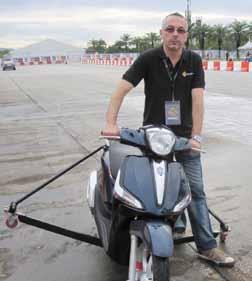
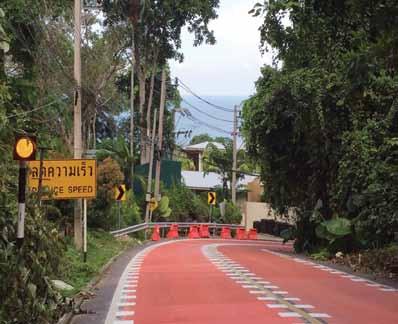
Above: Bend in Phuket after modifications – grippier surface, warning sign and protection for the armco and solid wall beyond Left: The Piaggio demonstration – note plastic sheet and stabiliser wheels!
John Chatterton-Ross
John joined the BMF aged 17 in 1969 and has been a member ever since. In the 1970s he served as local representative for NE London and Essex, later as a member of the BMF Board. He represented the BMF at the BSI dealing with helmet and visor standards, moving on to CEN (the European standards agency) when that became the focus. In the late 1980s the BMF was the first motorcycling organisation to conduct advocacy work in Brussels, and John was involved in work on the first Driving Licence Directive before going on to work in the FIM from 1990. After 17 years voluntary work at the FIM (and retiring from Thames Valley Police) he joined the staff, serving as Executive Secretary, International Affairs until 2020. Recently he was appointed as an honorary member of the FIM Commission for Public Affairs. John is now back in the voluntary sector as Head of Safety for Powered Two Wheelers at the SRF. “I still keep in touch with friends from the BMF of days long ago via Facebook,” he says. “There you will find me, Jeff Stone and many others. I hope to meet you online.”
Safer Roads Foundation
Michael Woodford MBE, Executive Chairman of the SRF, is a remarkable man. He grew up in Liverpool and spent the next 30 years of his professional life working for Olympus, becoming President of the entire corporation, the first Western ‘salary-man’ to rise to the top of a Japanese giant, chronicled in his John Grisham-like best-selling book ‘Exposure’. After blowing the whistle on a $2 billion fraud at the company he had to flee Japan in fear of his life. Ever since, he has been actively involved in road safety, founding the SRF some 15 years ago. It is a not-for-profit organisation dedicated to the reduction of road casualties, not just in the UK and Europe but in numerous countries around the world. The Foundation’s work focuses on the implementation of engineering measures to improve safety at specific sites (accident black spots), and collaborating with governmental, NGOs and commercial organisations all over the world in the development of design standards affecting road safety. SRF also works to increase public awareness through education and promotion, working closely with government, road safety organisations and individuals with shared objectives. www.saferroadsfoundation.org
Casualty Rates Compared
SE Asia’s casualty rates are in stark contrast to those of Europe and the Americas, though there are big differences within the region. All these figures below refer to all road deaths, not just those on powered two-wheelers, but small motorcycles and scooters remain the dominant transport mode across the region, so they are a good indication. Country deaths per 100,000 of the population as a result of road traffic collisions in SE Asian countries compared to Europe:
indonesia 36.1 laos 67.5 malaysia 29.8 South Korea 13 Thailand 60.2 vietnam 55 europe 9.3
Source: World Health Organisation 2015/2018










